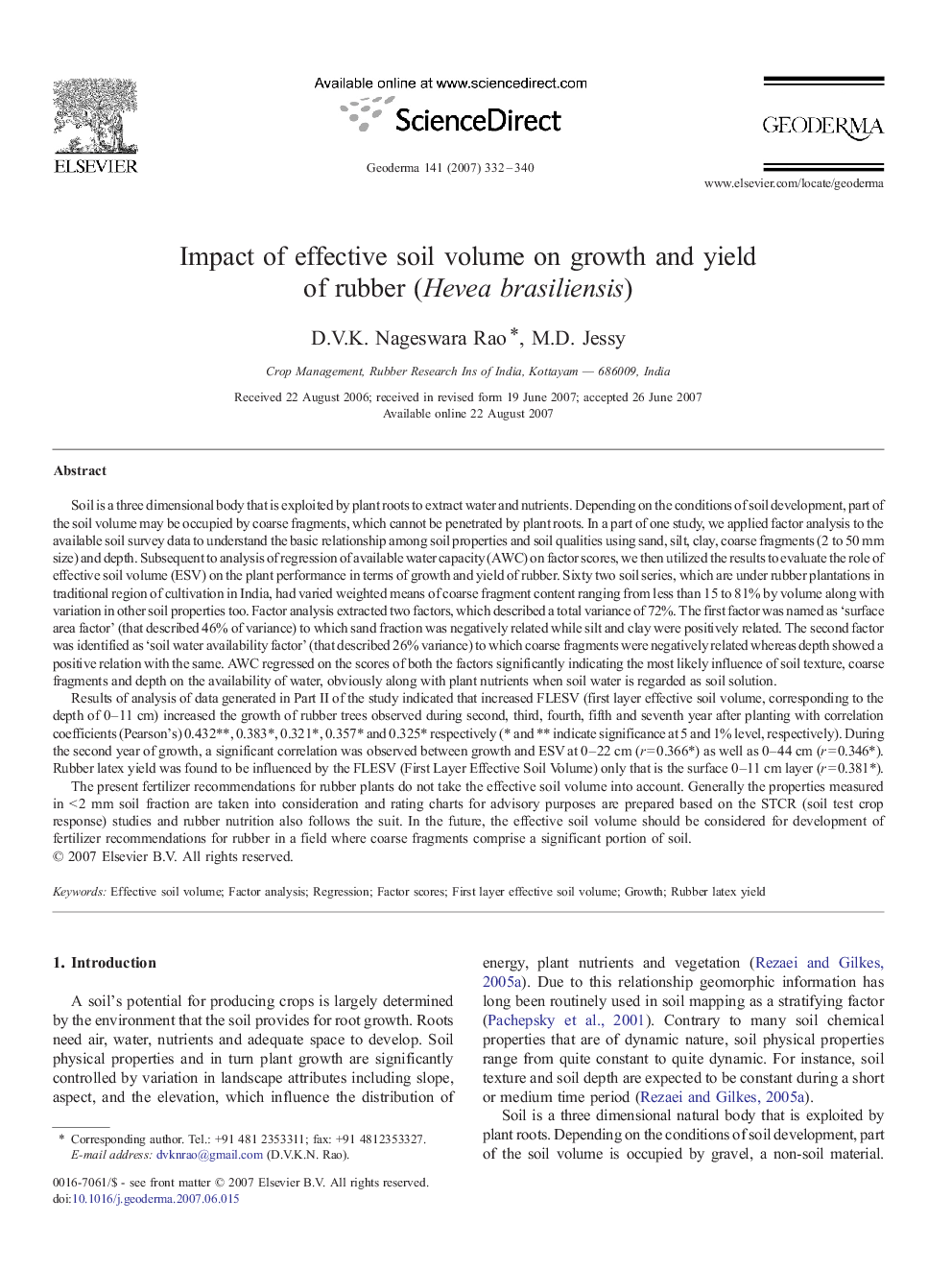| کد مقاله | کد نشریه | سال انتشار | مقاله انگلیسی | نسخه تمام متن |
|---|---|---|---|---|
| 4574925 | 1629550 | 2007 | 9 صفحه PDF | دانلود رایگان |

Soil is a three dimensional body that is exploited by plant roots to extract water and nutrients. Depending on the conditions of soil development, part of the soil volume may be occupied by coarse fragments, which cannot be penetrated by plant roots. In a part of one study, we applied factor analysis to the available soil survey data to understand the basic relationship among soil properties and soil qualities using sand, silt, clay, coarse fragments (2 to 50 mm size) and depth. Subsequent to analysis of regression of available water capacity (AWC) on factor scores, we then utilized the results to evaluate the role of effective soil volume (ESV) on the plant performance in terms of growth and yield of rubber. Sixty two soil series, which are under rubber plantations in traditional region of cultivation in India, had varied weighted means of coarse fragment content ranging from less than 15 to 81% by volume along with variation in other soil properties too. Factor analysis extracted two factors, which described a total variance of 72%. The first factor was named as ‘surface area factor’ (that described 46% of variance) to which sand fraction was negatively related while silt and clay were positively related. The second factor was identified as ‘soil water availability factor’ (that described 26% variance) to which coarse fragments were negatively related whereas depth showed a positive relation with the same. AWC regressed on the scores of both the factors significantly indicating the most likely influence of soil texture, coarse fragments and depth on the availability of water, obviously along with plant nutrients when soil water is regarded as soil solution.Results of analysis of data generated in Part II of the study indicated that increased FLESV (first layer effective soil volume, corresponding to the depth of 0–11 cm) increased the growth of rubber trees observed during second, third, fourth, fifth and seventh year after planting with correlation coefficients (Pearson's) 0.432⁎⁎, 0.383⁎, 0.321⁎, 0.357⁎ and 0.325⁎ respectively (⁎ and ⁎⁎ indicate significance at 5 and 1% level, respectively). During the second year of growth, a significant correlation was observed between growth and ESV at 0–22 cm (r = 0.366⁎) as well as 0–44 cm (r = 0.346⁎). Rubber latex yield was found to be influenced by the FLESV (First Layer Effective Soil Volume) only that is the surface 0–11 cm layer (r = 0.381⁎).The present fertilizer recommendations for rubber plants do not take the effective soil volume into account. Generally the properties measured in < 2 mm soil fraction are taken into consideration and rating charts for advisory purposes are prepared based on the STCR (soil test crop response) studies and rubber nutrition also follows the suit. In the future, the effective soil volume should be considered for development of fertilizer recommendations for rubber in a field where coarse fragments comprise a significant portion of soil.
Journal: Geoderma - Volume 141, Issues 3–4, 15 October 2007, Pages 332–340